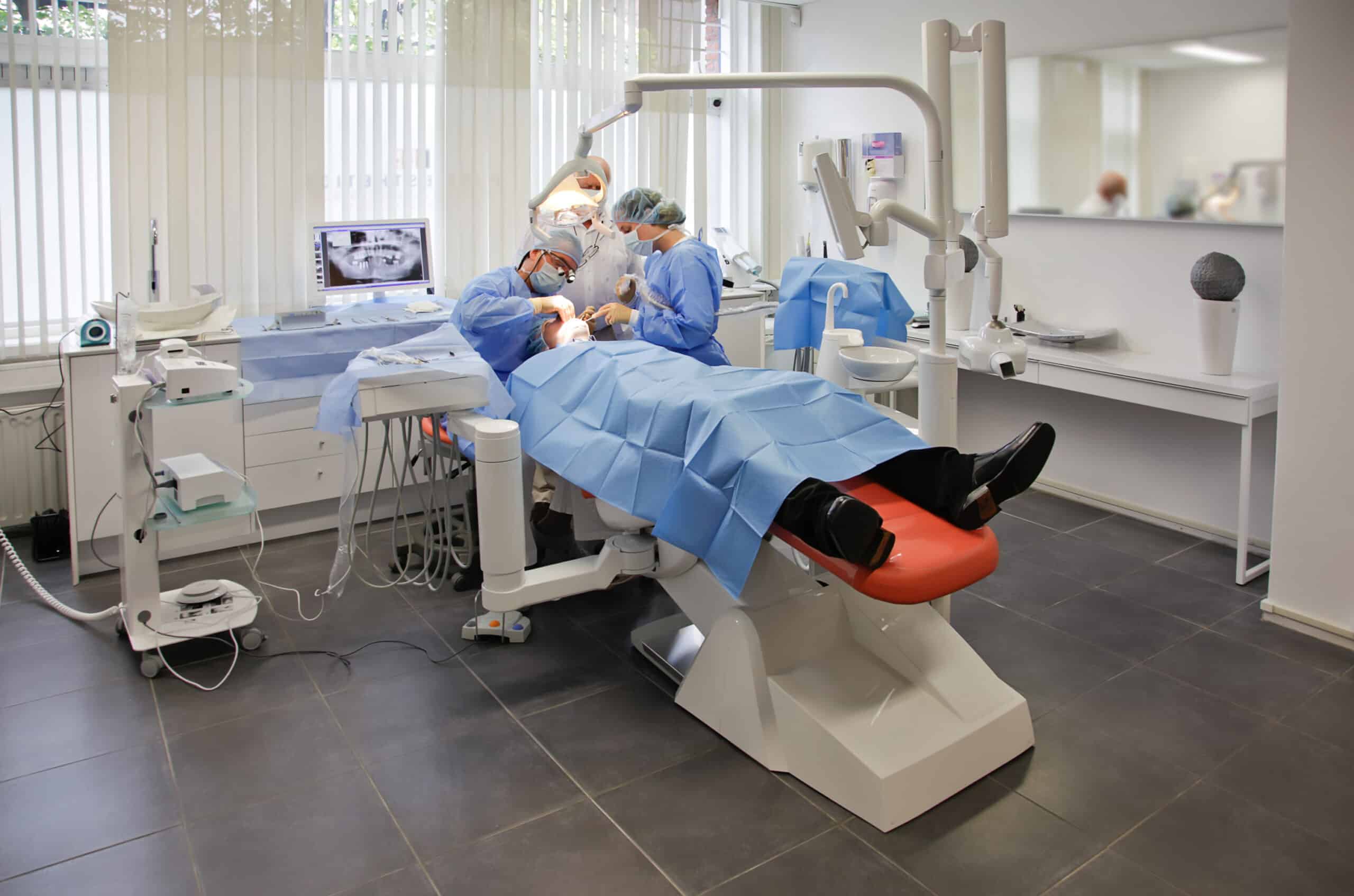Dental stripping or IPR is a technique used in orthodontics that is based on the interproximal reduction of tooth enamel.
It is the procedure by which the orthodontist reduces the width of certain teeth to separate them and gain space between them.
It is a very common procedure in orthodontics and is harmless to the tooth.
The width reduction is only between 0.2 and 0.5 millimeters and can be carried out with any system, with or without brackets.
It is mainly used in cases of patients who are going to undergo treatment and have crowding problems.
When is stripping performed in orthodontics?
Although stripping can have more applications within dentistry, this procedure is mainly used in orthodontic treatments.
Above all, in cases in which it is necessary to gain space to achieve the alignment of the teeth while respecting the biological limits of each patient.
That said, it is important to note that interproximal reduction is performed selectively, as it is only performed on certain teeth.
It is indicated in cases where it is necessary to eliminate only a small part of the tooth width.
Stripping is used in orthodontics for cases of crowding in which it is necessary to reduce a small part of the width of the tooth.
In this way, they manage to solve in a particularly simple and practical way the problems of lack of space and crowding.
It takes only a few minutes and is painless.
However, in the case of people who have a great need for space, it is necessary to resort to other methods that we will detail later on.
In addition to gaining space, orthodontic IPR is used to reduce black triangles between teeth, known as pockets.
Some patients have small dark spaces between teeth that are in contact.
This occurs when teeth are triangular in shape or if loss of dental papilla has occurred.
Dental pockets
Enlarge image
DENTAL POCKETS
In these cases, stripping helps to eliminate the point of contact between the two teeth precisely in the area where the triangle is formed.
Thus, it gives the tooth a more quadrangular shape in which the edges are parallel.
How is dental stripping performed?
Stripping can be performed on both the upper and lower arches.
To perform the procedure, the orthodontist has the possibility of using different methods.
This choice will depend on your own preferences and the enamel reduction required.
The instruments at your disposal are as follows:
Polishing strips.
This is a manual and particularly simple method.
It is the one that allows the least amount of enamel to be reduced, so it is sometimes necessary to combine it with another technique that allows more space to be generated.
Polishing burs
This is a mechanical procedure that allows more space to be gained.
However, precisely because of this fact, the qualification of the professional is particularly important in order not to eliminate excessive dental material.
Stripping files
Enlarge image
STRIPPING STRIPS AND STRIPPING BURS
Once stripping has been performed, the interproximal reduction will be visible, as small spaces between the teeth will be visible.
However, they are practically imperceptible to others and have a limited duration thanks to the micro-movements of the orthodontic teeth.
As the treatment progresses, the spaces will become smaller and smaller until they close completely once the teeth are fully aligned.
However, while these small gaps remain in the patient’s mouth, it is very important to be especially careful with hygiene.
This prevents food debris from remaining between the teeth.
It is especially useful and beneficial to use oral cleaning utensils such as an interproximal brush or an oral irrigator.
Do not be afraid
Some patients are afraid to hear about stripping for the first time, but it is a common and minimally invasive procedure.
Does stripping hurt?
When we explain to our patients the need for this treatment, many of them are frightened by the possibility of having their teeth “filed” down.
However, for their peace of mind, we clarify that it is a particularly conservative space gain technique and that it does not hurt.
It is true that the person who undergoes this procedure may feel an uncomfortable sensation, as they feel that they are “filing” their teeth.
In spite of this, there is no pain because the enamel has no nerve endings and work is done on the outermost layer of the tooth.
The proof that you do not feel pain is that anesthesia is not used.
Is it an aggressive procedure for the tooth?
If performed properly, interproximal reduction is a harmless procedure for the tooth.
Although it involves removing part of the tooth enamel, it involves only a tiny portion of the thickness of the enamel.
Before any dental treatment you should choose a professional that you absolutely trust.
Since we take this for granted, our recommendation – in case you find stripping unpleasant – is to trust their judgment, relax and close your eyes.
Are there other space-gaining procedures?
In addition to stripping, there are other space-gaining techniques that orthodontists can use.
These are as follows:
Arch expansion.
This technique consists of increasing the length of the arch by placing fixed or removable appliances.
Incisor protrusion
The increase of space is achieved by bringing the incisors slightly forward by using fixed or removable appliances.
Tooth extraction
While stripping is an appropriate technique when the aim is to reduce a small part of the thickness of the enamel, extractions allow to gain between 8 and 10 mm.
Stripping drill
Enlarge image
DENTAL STRIPPING
Is IPR better than other space gain techniques?
Now that you know what stripping is and what it is used for in orthodontics, it is necessary to consider another aspect.
Although the technique is characterized by being simple and practical, it is neither less drastic nor more suitable than any other space-gaining procedure.
For example, it is often the case that patients are intimidated by the prospect of extractions and relieved when stripping is involved.
That said, the most important thing in orthodontics is treatment planning on a case-by-case basis.
In other words, extraction is not an aggressive technique if the treatment plan requires it because there is a great need for space.
Thus, if avoiding extraction conditions the health of other teeth, compromises the stability of the treatment or lengthens it unjustifiably, it would be a wrong decision not to carry it out.
WE DO YOUR ORTHODONTIC STUDY
In this particular case, when there is a need to gain a lot of space, it would not be logical to sacrifice so much enamel or reduce the interproximal space in all the teeth.
Let us remember that dental stripping obtains between 0.2 and 0.5 mm, while an exodontia obtains between 8 and 10 mm.
Therefore, if you have a dental crowding problem and wish to align your smile, the best thing to do is to go to a trusted orthodontist.
Once in the clinic, it will be possible to carry out a case study and determine which technique is best suited to the needs of your mouth.
You may be interested in ” Have you finished your orthodontic treatment? We tell you why you should wear retainers.



